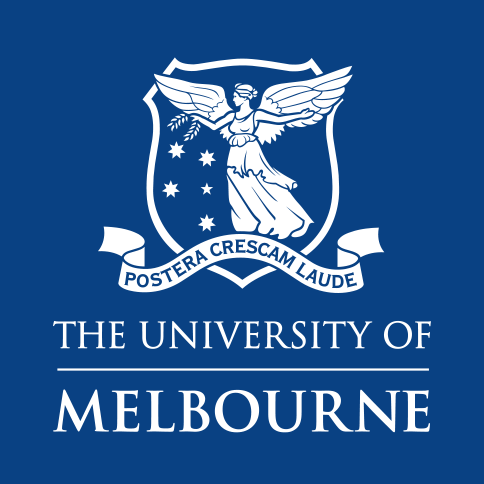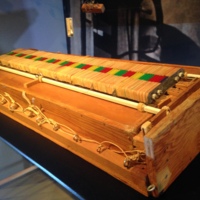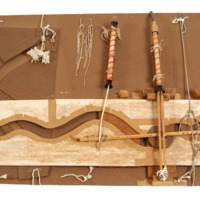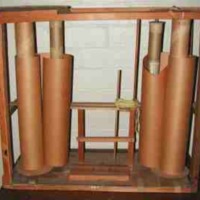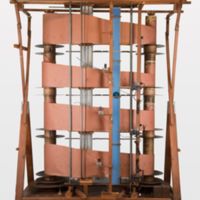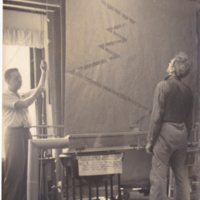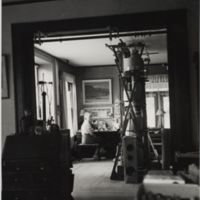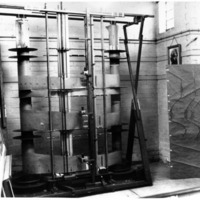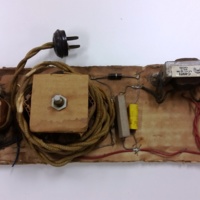TRANSFORMING EVERYDAY OBJECTS INTO FREE MUSIC MACHINES
'...Free Music demands a non-human performance. Like most true music, it is an emotional, not a cerebral, product and should pass direct from the imagination of the composer to the ear of the listener by way of delicately controlled musical machines.' Percy Grainger, Free Music, 6 December, 1938.
In 1945, Grainger met a young physicist, Burnett Cross (1914-1996), and together they began formulating innovative ways to accurately play Grainger’s Free Music without the need for human performers. This goal led them to work on a long series of increasingly complicated experiments at the Grainger home in White Plains, New York, aided by Grainger’s wife Ella. Percy, Ella and Burnett used everything from kitchen utensils, vacuum cleaners, sewing machines and drills, to film canisters, rubber grommets and children’s records to create the music machines. Wearing their best outfits to avoid police suspicion, they scavenged for materials in rubbish piles behind department stores and furniture shops.
The objects below are some of the many Free Music machines in the Grainger Museum Collection. Grainger sent out many boxes of complete and incomplete machines to the Museum from his home in White Plains throughout the 1950s, hoping these instruments would be inspirational to other experimental and free-thinking musicians and composers. Photographs in the Grainger Museum Collection taken by Burnett Cross document the creative and practical aspects of the machines being built and tested.
